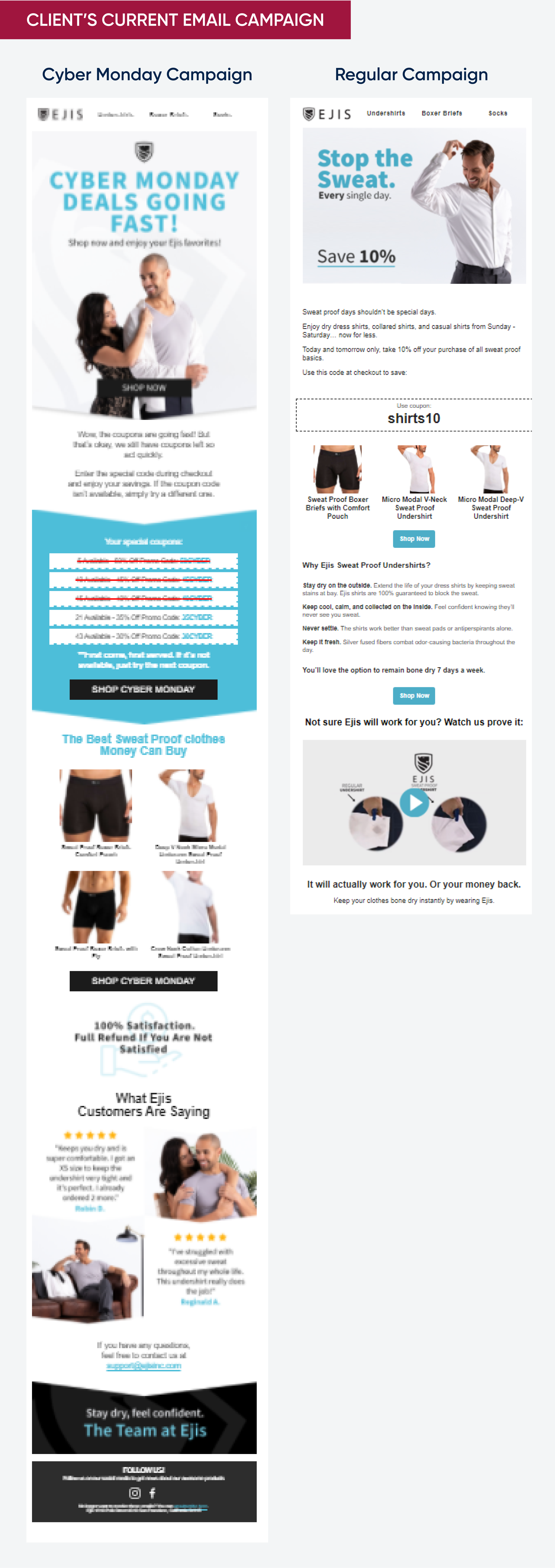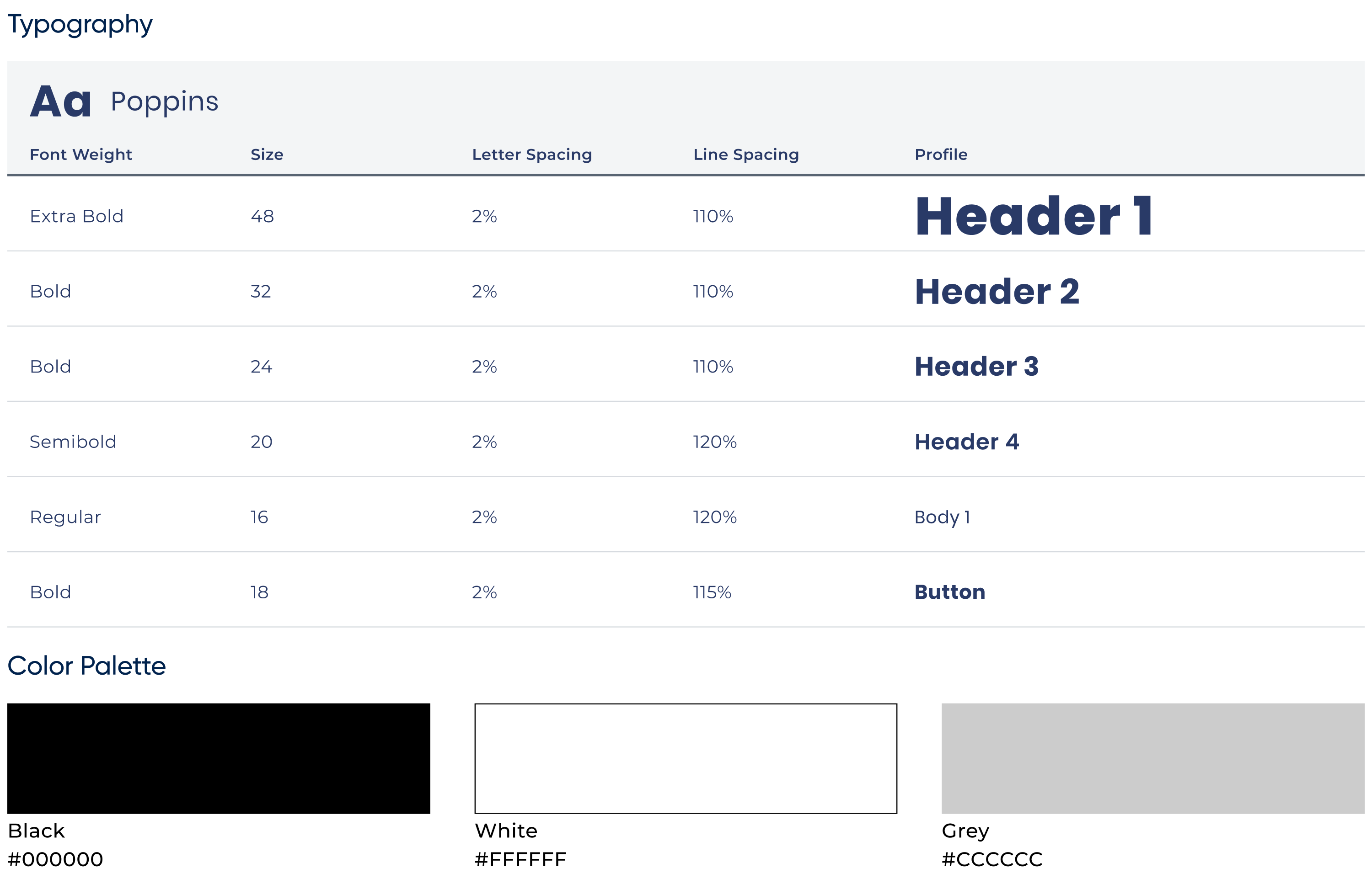Email Design
How I applied UI/UX principles in an email campaign that resulted to 160% increase in revenue
The problem
The client has been running email marketing campaigns for his fashion e-commerce business for more than a year. But after seeing the email marketing performance of his competition, he decided to find a different marketing company to handle his email marketing campaigns.
The email marketing company hired me as a UI/UX designer to assess and suggest improvements to their client’s current design. Whatever the output is will be used as a test campaign.
Scope of work
- User research
- User Experience redesign strategy
- Visual Design
- Motion Graphics
Canada-based Client
The marketing team was given the task to recreate a regular email campaign that has a 25% discount on some items
We were given two days to prepare the campaign which we will run on the third day. I was partnered with a copywriter to strategize how we will approach the changes.
This is my first time designing an email campaign, and was told that we will be using Klaviyo, an email marketing tool.
Access to their analytics revealed more about the type of market that we are dealing with
Although I was not allowed to access the client’s analytics, I was given a few information that we can use to profile the the users.
Below are some of the points we observed based on their analytics:

Based on the analytics I created a profile of the target market of our campaign
After an interview with the client, I observed that the actual market as shown in the analytics is slightly different from the target market based on the client’s perspective.

Considering the actual paying users are from the USA, I took inspiration from other American brands within the same niche of premium clothing
I conducted a comparison to gather ideas on what the competitors are doing with their email marketing campaigns.


The team provided a copy for me to follow for my design.
As observed, email designs are presented vertically, hence there is a heirarchy of information. Users would treat their emails like how they treat a website.
With that in mind, I made a sketch of the hierarchy of information that would convince the user to click on the call to action.
I’ve applied the copy to the sketch and drafted the email design.
In addition to the actual design, I’ve also learned how to transfer this draft to the platform Klaviyo.


This campaign generated $3,400 within 24 hours from launching. This is equivalent to 160% increase from their average revenue from email campaigns.
To further prove the effectivity of our strategy, we created two more campaigns. By the end of that week.
The client earned a total of $13,000 from 3 email campaigns launched within one week.
A lot of the sales came from first-time buyers, which can increase the chances of repeat orders.
The results from these campaigns beat the other emails for special holidays such as Black Friday or Halloween sale.

“Also [copywriter], The last email campaign you wrote converted around $3400 for them which was dope. We need to write another very similar campaign for them this weekend. Ejis VNeck Deep V and normal [shirts]”

“(We’re) trying to end them this month with earning $20,000 from email. Currently we at close to 13 ($13,000). This will hopefully push us to that point.”
We secured a contract with the client to create the rest of their automated email flows and campaigns.
This paved the way to more brand deals and has been profitable for the company.
Other design assets
After securing the client, I established a simple style guide for future email marketing campaigns.

This project is proof that designs can directly affect the profitability of a business.
The design becomes more effective the more strategy is placed into it. The use of design theory, research, data-analysis, and brainstorming, can bring out the best approach to achieve the goal.